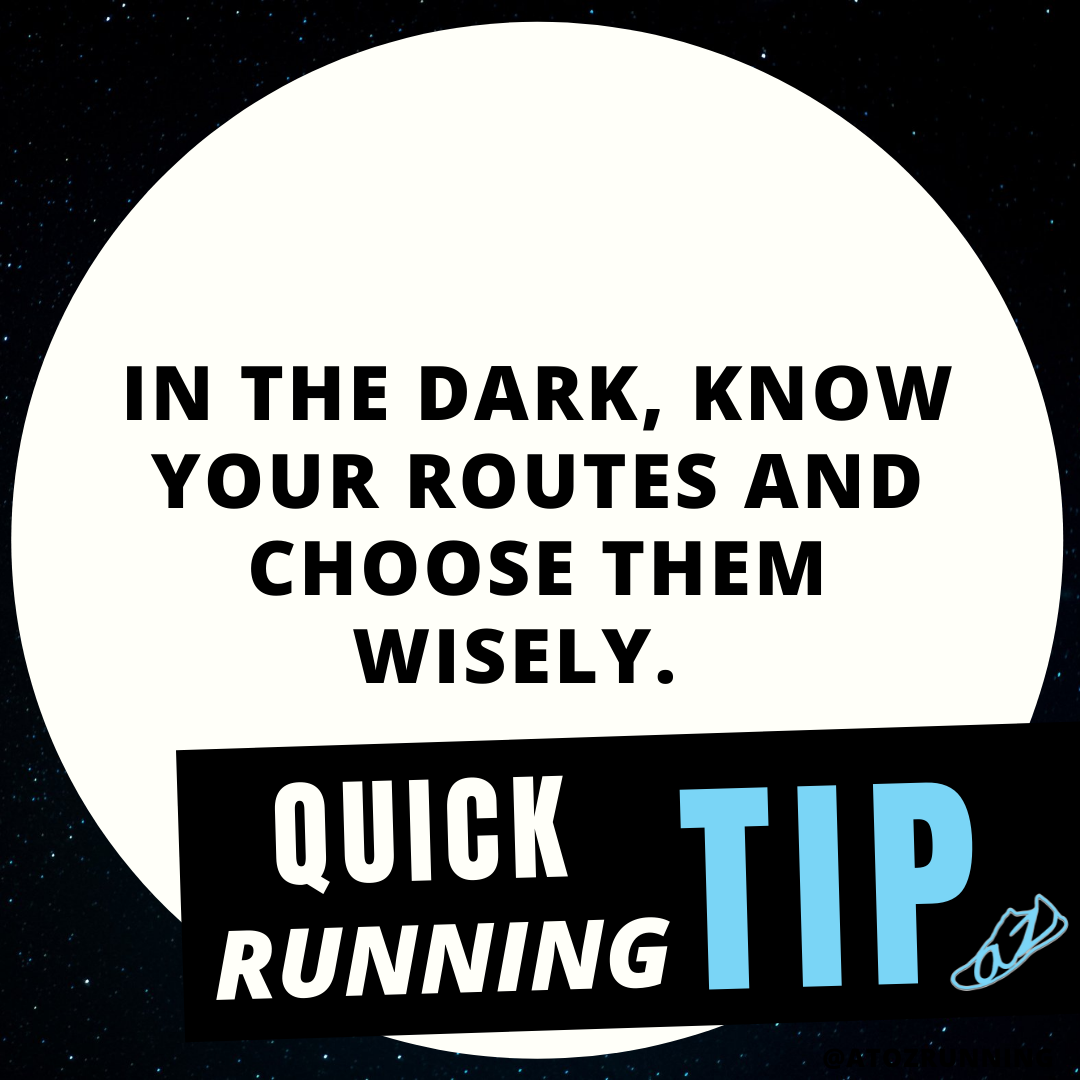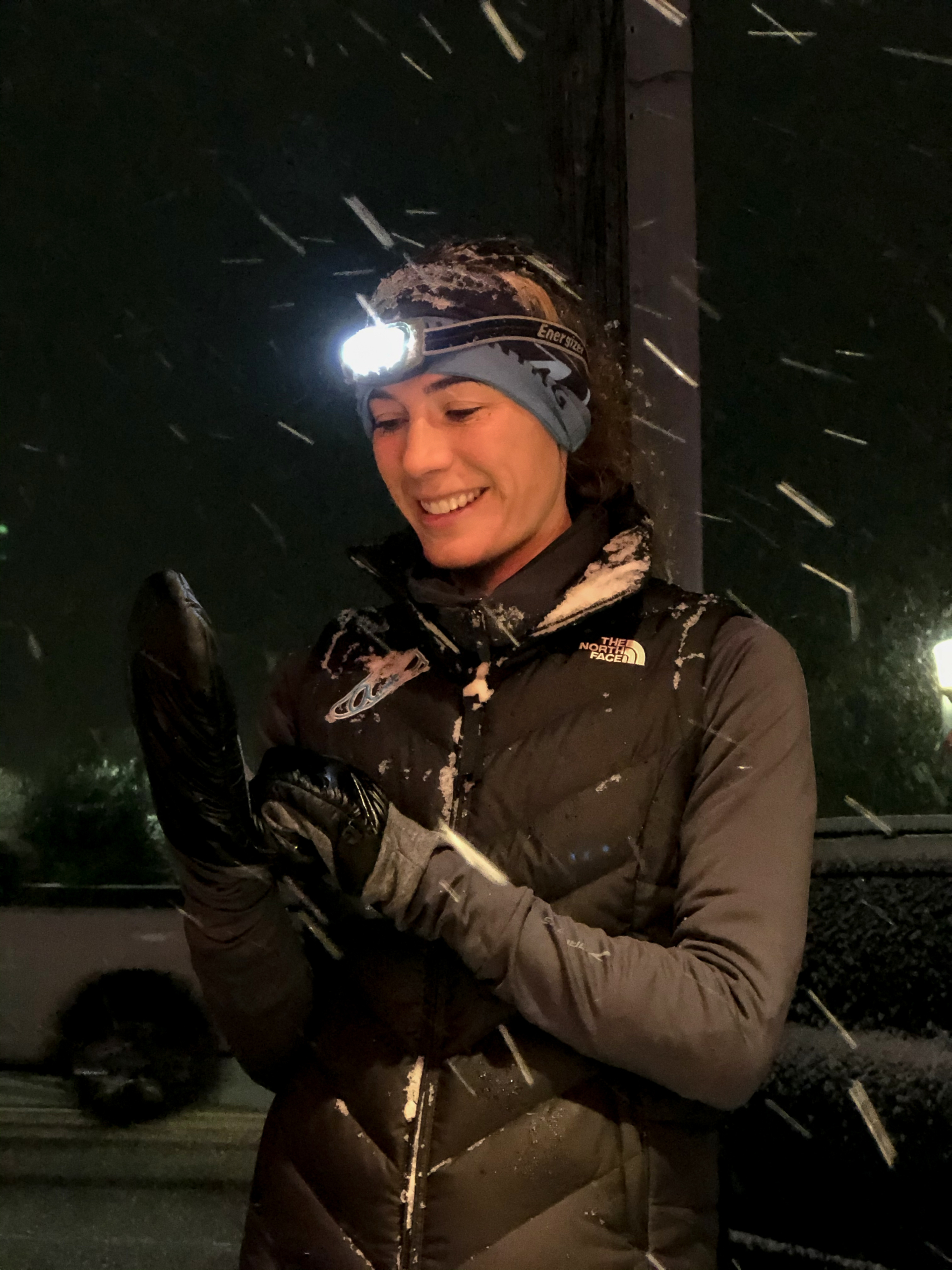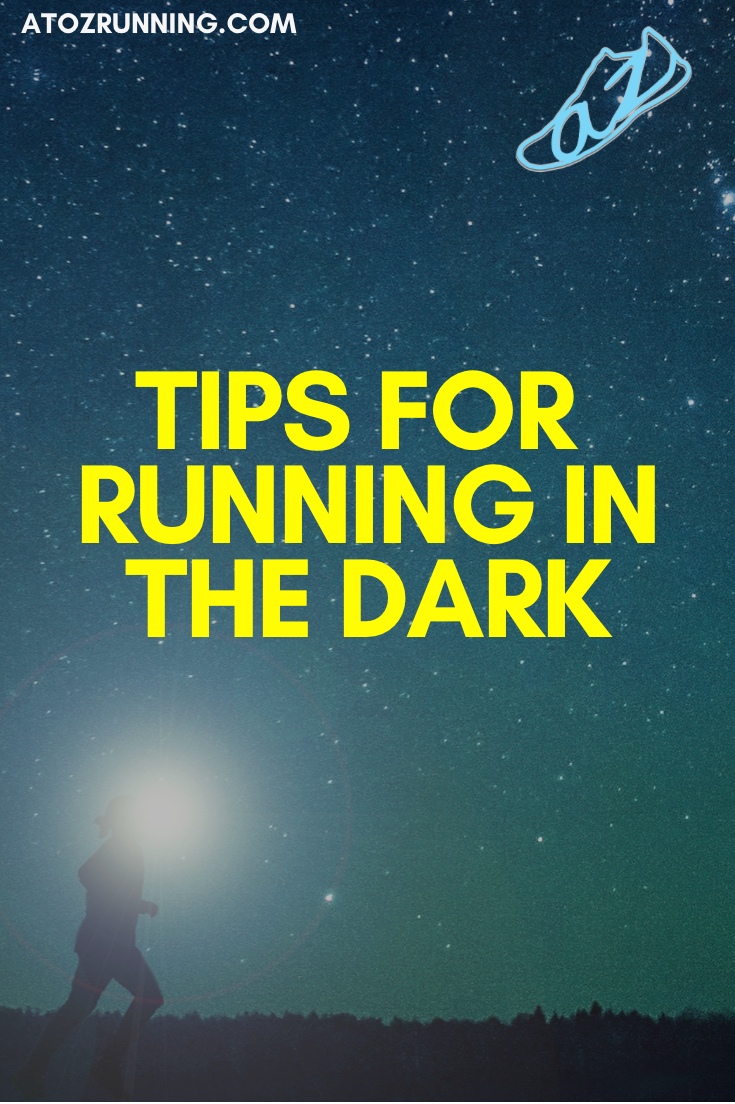Whether daily or occasionally, most runners find themselves needing to run in the dark at some point. Everyone can use some reminders and tips for running in the dark!
Valid concerns for safety and potential injury keep some from running in the dark. It is not unusual for some runners to take their training to the treadmill (check out our episode about treadmill running).
In this article, we sourced tips from runners who have found ways to mitigate the negatives of running in the dark. Many say that running in the dark is enjoyable and they have found confidence by employing the strategies below.
TIPS FOR RUNNING IN THE DARK
Know your routes & choose them wisely.
There are fewer scarier things than getting lost in the dark with a dead GPS watch or phone. Knowing your routes well beforehand helps you to confidently know your route. Not only that, but if you’ve run your route many times in the daylight, you’ll know what potholes to avoid, uneven places in the road, where that scarecrow is on your route (eh hem, check out my personal reel ).
While considering where to run in the dark. Choose a route with a large shoulder and avoid busy roads. Even better, run on a paved trail. Sidewalks are good too, although be aware of unevenness and the extended pounding from the concrete.
You want to know your route, but have a few of them. Mix them up in case someone is watching your patterns.
Considerations for routes when running in the dark:
- If possible choose a well-lit route.
- Avoid roads with no shoulder or sidewalk.
- Consider the unstable surfaces for potential hazards.
- Avoid patterns.
Illuminate for yourself and others.
Obviously you will want to wear lights and hold lights for your own visibility but also for vehicles and other pedestrians and cyclists to see you.
While you might enjoy stumbling around in the dark, you may give someone a conniption if they happen upon you without illumination.
Best ways to illuminate
- Headlamps
- Chest lamps
- Clip on lights
- Reflective gear
- Reflective and bright clothing
Remember, you need to be visible from both the front and the back.
Prepare with self defense and self awareness.
While dangers can lurk in the day too, night time running could mean fewer other people to scare away predators. Investing in pepper spray, a taser, or some other kind of personal protection, is recommended.
Always have a way to make noise or call for help. A whistle works.
Running undistracted is a good practice for night time running. Some have suggested leaving the headphones at home. Not only will you be more aware of your footing, but also if there is an animal or another person nearby.
Slow your roll.
Unless you are on a track or very secure location, slow your roll. It’s the laws of physics. If you are more prone to fall at night, decrease your velocity to minimize impact with the group.
Communication is key.
Let someone know you are out. If you are alone, text a friend or family member. The last thing you want is to be stranded with a medical issue with no one knowing to look for you. Communicate your route and when you expect to be done.
Thank you to @alexandtrack @samfromamsterdam @mama_gmills @roach_king_of_pinterest @irunforshirtsandmedals @capycath @jbooydeg @jesuisunanana @nkantz12 @harsheytherunner
THRIVE AS A RUNNER
A to Z Running is a website, coaching, and podcast that gives information about the world of running, inspiration to fuel passion and excellence, and ideas for making connections and finding community.
If you want to THRIVE as a runner, subscribe for FREE. Add good things to your inbox to help you become a better runner.





Leave a Reply
Want to join the discussion?Feel free to contribute!